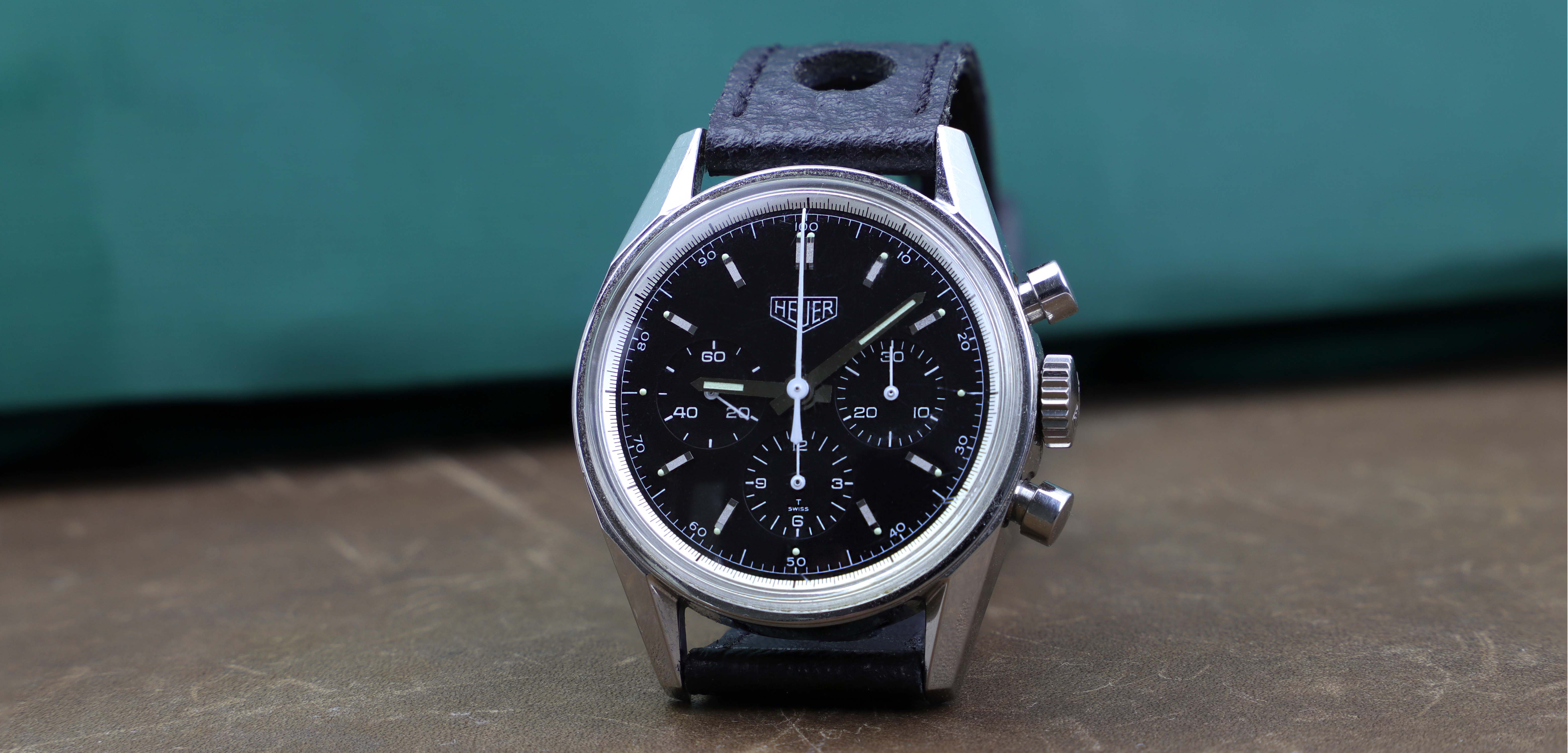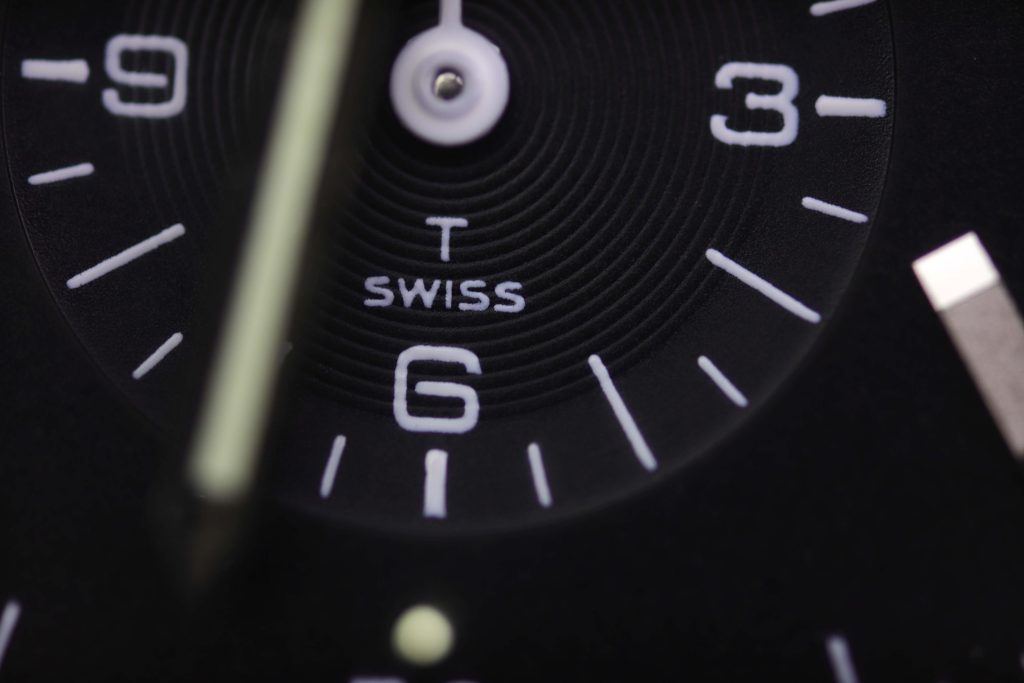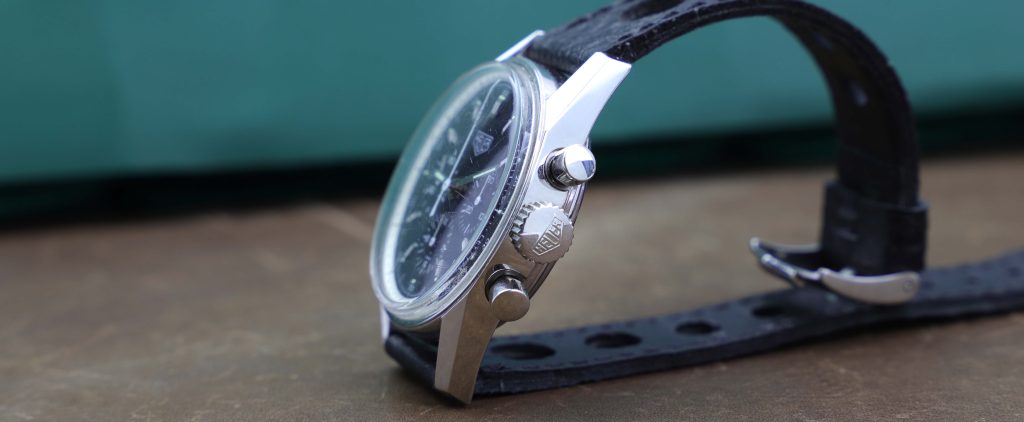
Heuer Carrera CS3111 – The Best Re-Issue Ever Made?
When it comes to re-issue models in the watch industry, the opinions seem to be rather split. A re-issue whose purpose and idea is to commemorate a special model made, often connected with a special anniversary, is however often a popular choice when exploring older vintage models for many reasons, two main reasons are the build quality, which over the years has gotten significantly better for most Swiss well-established manufacturers, and secondly the price which tends to be more affordable compared to the original design and model. However, when it comes to watches issued as a re-edition one definitely stands out from the crowd – the Heuer Carrera CS3111, manufactured in the late 90s’ to commemorate the special Heuer Carrera from 1964. In this article, we’ll take a deeper dive into why the Heuer Carrera CS3111 perhaps might be the best re-issue ever made – along with the watch’s specifications in detail.
Specifications & Stats
First of all, let’s go over the specifications for the Heuer Carrera CS3111:
Lug Width: 18mm
Case Size: 35,5mm
Type of Glass: Domed Plexiglass
Case Material: Stainless Steel
Water resistance: 3 bar / 30 meter
Movement: Manual wound
Caliber: Lemania cal. 1873
Power Reserve: 40 hours
Dial: Black with white contrasting tension ring & text
Hands&Index: Tritium
Strap/Buckle: Leather/Buckle
Functions: Seconds, Minutes, Hours, Chronograph with a 30-minute and hour register
What is a Re-issue watch?
Just as the name suggests, a re-issue watch, or as Heuer describes it: “Re-edition”, is a second issue of a model often a number of years later. Taking a look at leading Swiss watch manufacturers it appears to be a re-occurring theme and strategy from time to time, and honestly, it is not hard to understand why.
When it comes to watches more or less every major model from any company such as the Patek Philippe Nautilus, Rolex Submariner, Audemars Piguet Royal Oak, Omega Speedmaster, or in this case the Heuer Carrera was models first developed in the ’60s and ’70s. These watches were the first interpretation from each brand of how the model should look like, and can thus be described as the original design and model, for what later would become highly popular models.
However, using the word re-issue indicates that the watch more or less is the same as the original, but perhaps with a few tweaks and improvements to make it stand out just a bit from the original model. Iconic models which were mentioned above such as the Rolex Submariner, Patek Philippe Nautilus, or Audemars Piguet Royal Oak, do not however have re-issue models carried out afterward. There could be many reasons why this is the case, but instead, if we take a deeper look at Rolex as a brand, we know that they are a brand that puts evolution rather than revolution first into consideration. The Submariner for example, just like the Royal Oak or Nautilus, looks more or less the same as the original design but has gone through an evolution over the 60 years course.
With this said, the Submariner has over the years been improved slowly and constantly is an ongoing evolution, which makes it a watch that not is a re-issue, nor has Rolex ever made a re-issue.
Typically, a re-issue is presented on a design or model that is brought back after several years of disappearance in the manufacturing process. There have however been several re-issued made in recent times by bigger Swiss watch brands such as Omega, Breitling, and of course Tag Heuer.
Heuer Carrera CS3111 – True To the Original
As mentioned above, it is popular to make some small tweaks on a re-issue to make it stand out from the original design just a tiny bit. However, what many manufacturers do is change the design significantly, but justify the model as a re-issue by keeping important elements of the original watch, which could be the case design, dial colors, or small markings and details.
Exploring the Heuer Carrera CS3111 however, there are very few designer changes from the original watch presented in 1964. Examinating the watch in detail reveals a number of things, which makes it an exceptional well-made re-issue that truly commemorates important elements of the original design and the time epoch in the ’60s.
Plexiglass Crystal
One of the most obvious and important vintage elements of the watch is of course the domed plexiglass crystal. Back in the early 60s, very few watches were equipped with a crystal made from anything else than plexiglass. What recognizes plexiglass is its soft characteristics, which also is one reason why sapphire crystal later replaced it. Soft plexiglass is not scratch resistant at all, meaning that small hairlines will occur on the plexiglass just after normal usage, which to some is disturbing, and to others doesn’t bother at all. Plexiglass, because it is that soft, namely can be polished by anyone using everyday-use products at home such as toothpaste.
Another reason why plexiglass was replaced by sapphire crystals in the watch industry, is because plexiglass can dry out, which can create cracks in the crystal. Cracks in the crystal may look rough and tough visually, but creates an issue when it comes to water resistance.
Tritium Light Mass
Another true and important element of the watch is the light mass which is used: Tritium. In the mid 50’s Radium was replaced by Tritium as a much safer and less dangerous light mass. Tritium was then used as the main light mass for every watch manufacturer up until 1998 when it was replaced by luminova.
Tritium has a half-life of 12,3 years, which means that its’ efficiency decreases by half every 12,3 years. This is what causes tritium dials to age into unique brown, orange, yellow, vanilla, or sometimes grey dials. As the Heuer Carrera CS3111 was manufactured in the late 90s, it is not unlikely that models manufactured in 1998 or later, instead used luminova as a safety precaution, as tritium still is lightly radioactive, meaning it’s not completely risk-free to use, even though the health risks are slim to none. But changing to luminova in 1998 would also mean that the purpose of the luminova (to glow in the dark), wouldn’t be an issue at all 100 years down the line.
That’s why it’s fun and interesting to see the Carrera re-issue with a tritium dial and hands, which is indicated on the dial at the 6 o’clock hour-register as a “T2 written over “Swiss”.
35,5mm Case
The case of the Heuer Carrera CS3111 is for the time period (the late 90s) relatively small and outdated. During the late 90s and early 00s, larger watch cases were starting to get introduced as the new standard in the watch industry. By Today’s standards, in 2023, a case size of 35,5 would be categorized as a woman’s watch, and in the late 90s, it would most likely be viewed as a unisex/men’s watch, and in the 60s exclusively a men’s watch.
That’s one of the better reasons why the Carrera might be the perfect re-issue, as the smaller case size might not have been the most modest choice in the late 90s when it was manufactured. The case size is a typical example where manufacturers that create a re-issue tend to bend the rules and make the case slightly or significantly bigger, in order to meet the stands of today, yet Heuer decided to stay true to the design and honor the 35,5mm perfect case size.
Another interesting detail about the re-issue is the fact that Heuer decided not to hide the fact that the watch was made as a re-issue. By looking at the case-back of the watch, we can see that the text “1964 Heuer Carrera Re-Edition” is engraved.
Naturally with a smaller case comes a smaller lug width, which on the Heuer CS3111 measures 18mm.
Crown & Pushers
The crown and pushers are also a perfect example of a vintage feeling given by wearing the watch. The crown, nor the pushers, are screw-in meaning that you can start and stop the chronograph by pushing directly, unlike the famously known Daytona (for example the reference 116500) where you would have to unscrew the pushers first, and then start/stop the chronograph.
However, using non-screw-in crown and pushers creates a dilemma where watches that use this construction, tends to offer a less protective water resistant case.
Heuer – Not Tag Heuer
Although the Tag Group purchased the majority of the Heuer shares in 1985, what then became “Tag Heuer” decided to stick with Heuer printed on the dial solely, and not Tag Heuer – a definite nod to the past.
Lemania Cal. 1873
The watch is powered by the immaculate Lemania caliber 1873, perhaps better known as the original movement, modified by Omega for a number of Speedmaster such as the following:
- Caliber 1861 (Used in Speedmaster Professional Moonwatch 311.30.42.30.01.005)
- Caliber 1869 (Used in the Speedmaster Dark Side of The Moon 311.92.44.30.01.001, as seen above)
- Caliber 3861 (Used in the Latest Moonwatch, But also the Apollo XI 50th Anniversary)
- Caliber 861
It’s interesting to see that Heuer left the movement completely to Lemania, without modifying it, unlike Omega which has used the Lemania Caliber 1873 as a base caliber for almost its entire Chronograph collection, such as hundreds of Speedmaster, both older models and new ones still sold by Omega today.
As mentioned, this is a feature that makes the Heuer Carrera CS3111 perhaps the ultimate re-issued watch ever, as the design, proportions, and materials are more or less just like the original, but instead has been equipped with arguably the best, most function-tested chronograph movement to add extra reliability.
Different Caseback Variations
The Heuer Carrera can be seen with two different caseback variations, which makes it in theory possible to divide the watch in a MK1 and MK2 configuration. The earliest examples of the Heuer 1964 Carrera Re-edition can be seen with the text “1964 Heuer Carrera Re-Edition” engraved on the case back, with a font and finish that looks to be hand-engraved, whilst the later production caseback does not feature the engraving.
To some, the engraved, meaning the earliest examples of the re-edition, can be a fun feature that not only is rarer but also more true to the model name, whilst others might prefer the “cleaner” look on the caseback with no engraving.
Heuer Carrera 1964 Re-Edition Different Dials
During the same production time as the black-dialed Heuer Carrera reference 3111, a silver and pink dial was available too. The models do not differ anything from each other except the fact that the three have different dials.
Reference 3110 – Silver Dial
Reference 3111 – Black Dial
Reference 3112 – Pink “Salmon” Dial
However, if stainless steel isn’t your cup of tea, Heuer also manufactured a solid 18k gold version, which had a silver dial, and the reference number 3140.
Heuer Carrera CS3111 – In Conclusion
By today’s standards, it is safe to say that the Heuer CS3111 is a successful interpretation of the original 1964 Carrera. With a modest case of 35,5mm, it is definitely the perfect watch for the vintage enthusiast. With classical elements that are true to the original 60s design and epoch, such as tritium dial and hands, plexiglass, non-screw-in pushers and crown, it is definitely a perfect choice for those seeking the ultimate vintage-inspired watch, but with a modern robust movement and build quality. If you are into a smaller vintage-inspired chronograph, with a classic black dial, plexiglass, and leather strap – then the Heuer Carrera reference CS3111 definitely is the watch to check out!










